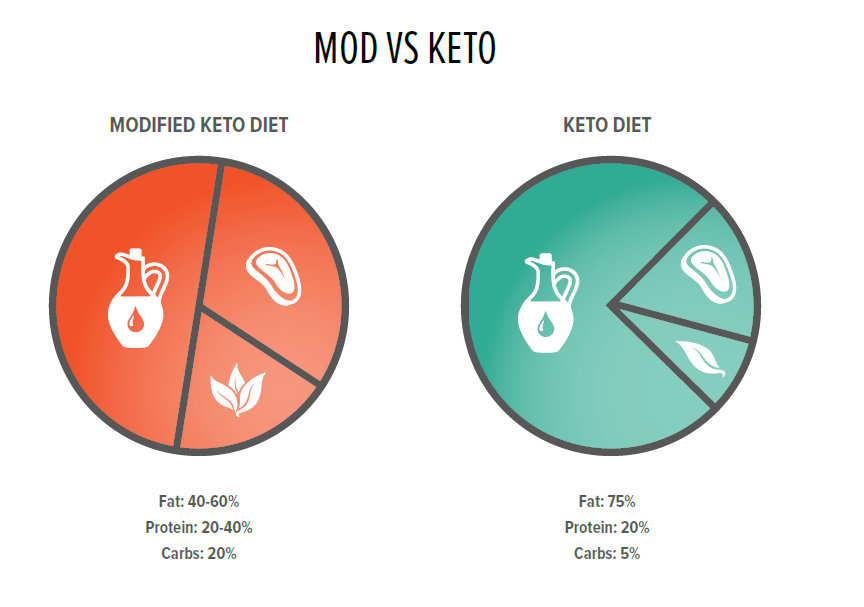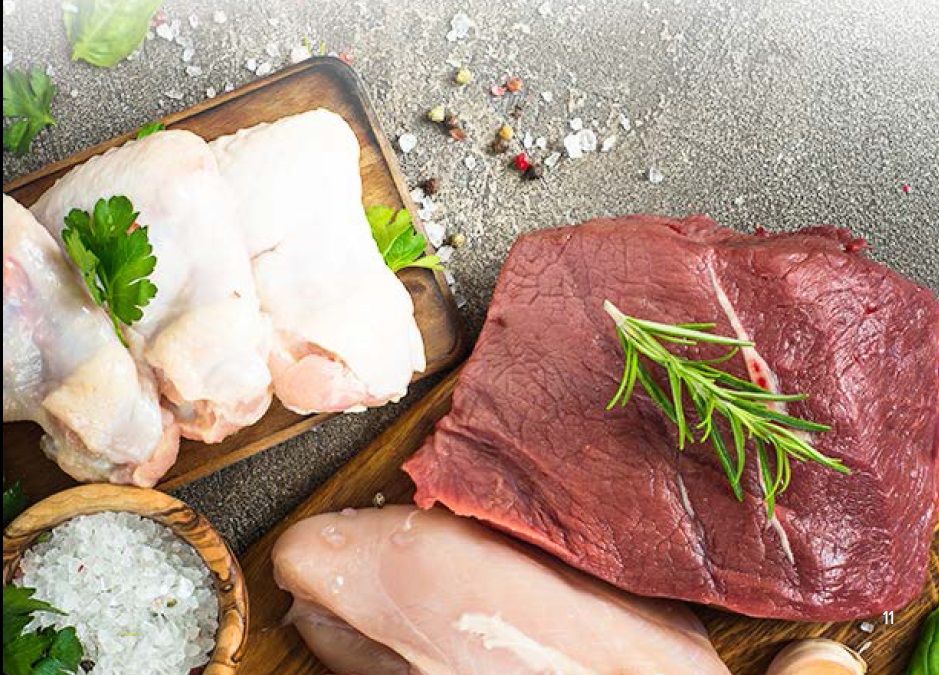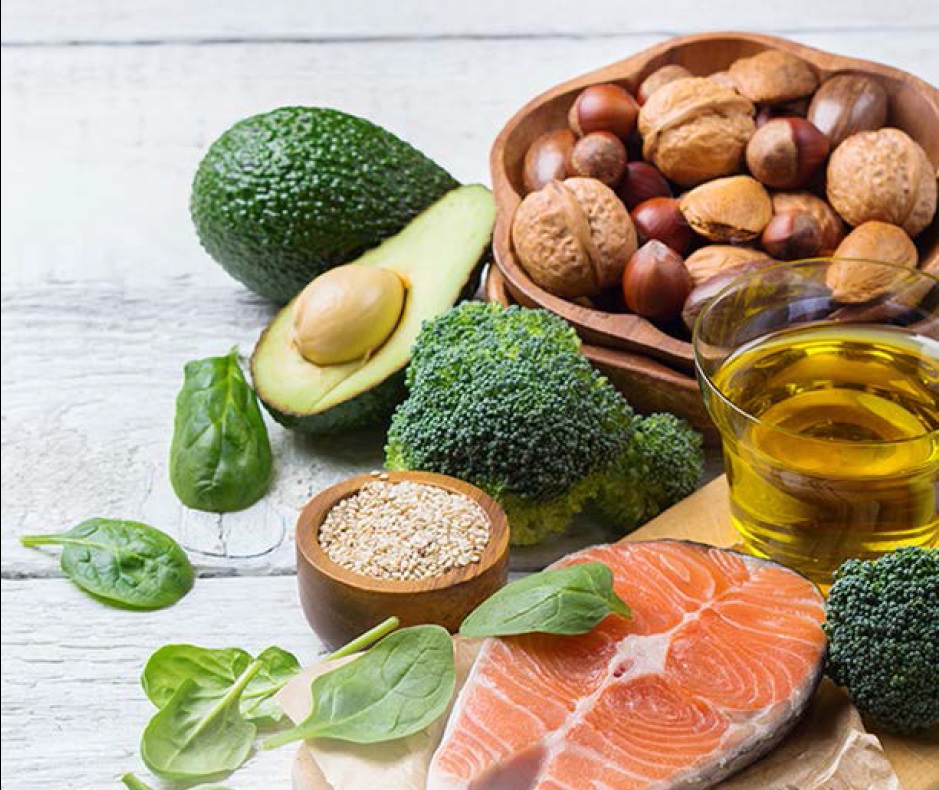We all know that food is our main source of energy. So why then do most people claim to be tired all the time, when it’s clear from looking at them that they get plenty to eat? The problem is that they don’t get their energy from the right foods.
This is the first part of two parts of an article written by the team at ONNIT about eating high fat, low carbs. In this part, we’ll discuss
- What Is A Ketogenic Diet?How Will A Ketogenic Diet Help Me Lose Weight? What Are The Health Benefits of a Ketogenic Diet?What Can I Eat On A Ketogenic Diet?
Scott
By Sean Hyson, C.S.C.S., Andrew Heffernan, Liv Langdon, Phil White, and the Onnit AcademyWe all know that food is our main source of energy. So why then do most people claim to be tired all the time, when it’s clear from looking at them that they get plenty to eat? The problem is that they don’t get their energy from the right foods.
When you follow a diet that’s high in carbohydrates, your blood sugar rises and falls sharply with every meal. When it goes down, so does your energy—this is the crash you feel shortly after lunchtime that makes you want to fall asleep at work in the afternoon. By reducing the amount of carbs you eat and replacing them with healthy sources of fat, you can stabilize blood sugar and enjoy steady energy and greater mental focus all day. These are two characteristics of a ketogenic diet, the ultimate version of a low-carb approach to nutrition that’s also a great strategy for losing weight, battling serious health problems, and promoting a myriad of other benefits for the body.
What Is A Ketogenic Diet?
A ketogenic diet is very low in carbs and high in fat. It’s similar to the popular Atkins diet, but the majority of calories come from fat and protein intake is lower.
Here’s how it works: If you eat like most people, you take in the bulk of your calories from carbs. Carbs raise blood sugar levels quickly, forcing your pancreas to release insulin, which drives them back down. Insulin tends to store those carbs as body fat, so it pays to keep insulin levels low.
When you restrict carb intake and increase your fats, you send the body the message that it must switch fuel sources. The liver begins to convert fat—both the fat you eat and the body fat you store—into molecules called ketones. When the number of ketones rises to a certain level in your bloodstream, you are officially in a state of ketosis. At this point, your body uses ketones as its primary energy source.
The medically-defined ketogenic diet has 75% of daily calorie intake come from fat, 20% from protein, and 5% from carbs. As we’ll discuss further down, this version of the diet has reams of research supporting its use for multiple health interventions and fast weight loss. However, most of the benefits of ketosis can still be achieved when you consume additional, moderate amounts of carbohydrate. We think the medical model of five per cent carbs is unnecessarily restrictive for most dieters, and it could hurt performance if you’re an athlete or active exerciser, so we prefer taking a slightly different path. A modified version of the keto diet was 40–60% of your calories come from fat, 20–40% come from protein, and the remaining 20% from carbs typically works great for most people. See I Work Out. Is A Ketogenic Diet Right For Me?‘). We call this approach—which appears to be more practical and sustainable for most—Mod Keto, and use that term to refer to those numbers throughout this book. While it may not technically put you into ketosis, Mod Keto will keep insulin low enough to promote fat loss and mental focus while still providing enough energy for hard workouts. Maybe best of all, you’ll enjoy the freedom to eat a wider breadth of foods than you could on a classic ketogenic diet,

Where Does The Ketogenic Diet Come From?
People have inadvertently followed ketogenic diets for as long as they’ve walked the earth. Before the advent of agriculture, when humans had to hunt and gather their food, it was common to fast for long periods and then take in mostly fat and protein foods, with only limited carbohydrates coming from berries and vegetables (the easiest foods to collect living in the wilderness).
Ketosis may have been discovered by cavemen, but it’s been embraced by the medical community since its earliest days. Ketogenic diets have been formally prescribed to treat epilepsy since before 500 B.C. In the 1920s, they were adopted by Johns Hopkins Medical Center as a means of treating epileptic children, and have been used there ever since. In recent years, ketogenic diets have been investigated for their potential in treating several more diseases (see What Are The Health Benefits of a Ketogenic Diet?)
How Will A Ketogenic Diet Help Me Lose Weight?
Since you begin to burn more fat for fuel, ketogenic diets make losing pure body fat much easier.
Remember that when you eat carbs, your blood sugar (glucose) rises sharply. It rises when you eat anything, but carbs convert most quickly to glucose. The pancreas releases insulin to take excess sugar out of the bloodstream, storing most of it as fat. Because ketogenic diets minimize carb intake, insulin levels are kept low, limiting the calories that can be stored in your fat cells.
This is often cited as a reason why ketogenic diets tend to outperform low-fat diets in clinical trials. A study in the journal Lipids found that ketogenic dieters lost almost twice as much weight as a group following a low-fat diet over 12 weeks, even though calorie intake in both groups was the same. Incredibly, ketogenic diets often promote weight loss even when calories aren’t controlled. A trial published in the New England Journal of Medicine allowed a keto group to consume as many protein and fat-rich foods as they wanted, while the low-fat dieters had to restrict their calories. After six months, the low-carb eaters enjoyed significantly greater weight loss, and still slightly more after a whole year.
If this makes you question the old adage that “a calorie is a calorie,” and that it’s the overall number of calories you eat that determines whether you gain or lose weight, you’re right to be sceptical. A study from Nutrition & Metabolism had subjects follow either a ketogenic diet or a low-fat diet and then switch diets for the same amount of time (50 days for the men in the study; 30 days for the women). In each case, the participants tried to cut 500 calories from what they had been eating, but in the keto approach, the men ended up eating significantly more. Nevertheless, cutting carbs worked better for losing fat for both men and women across the board. More impressive still is the fact that the men lost three times as much fat directly from around their waists as they did dieting on low fat.
Results are one thing, but no diet will work long-term if it makes you miserable to follow it. You’ll quit, return to your old ways of eating, and regain the weight. But this is where a ketogenic or Mod Keto approach really shines. Fats and proteins are highly satiating; eating them keeps you feeling fuller, so you’re less likely to feel like you’re “starving” — even when your calories are low. The temptation to break your diet and pig out just isn’t as strong as it is with lower-fat diets. A study in the Journal of the American Dietetic Association on overweight women found that not only did they lose more weight on keto than they did with a higher-carb, lower-fat plan, but they also reported feeling less hungry throughout the diet.
As we recently reported in our rebuttal to the Netflix documentary What The Health, two of the earliest studies that compared the effects of carb- and fat-based diets found strikingly different outcomes in how the subjects felt and behaved. Although calories were equal for both groups, the high-carb gang complained of being lethargic and
depressed, while the high-fat eaters remained energetic and satiated from their meals.
A Landmark Study
Some of the most impressive research on low-carb dieting to date came to light in November 2018. One of the largest and most long-term studies on the effects of higher fat eating and metabolism was published in the journal BMJ.
Researchers collected 164 overweight adults and had them diet strictly until they lost about 12% of their body weight. This was done to intentionally slow the subjects’
metabolisms and predispose them to regain weight quickly. At that point, the researchers wanted to test how different diets affected the metabolism.
The participants were then divided into three groups. One took in 20% of its calories from carbs (low carb), the second group 40% (control group), and the third group 60%
(high carb). Protein intake for all three groups was equalized at 20%.
For the next five months, scientists controlled all the subjects’ meals and snacks, and monitored the groups to ensure that no one gained or lost weight. The higher-carb folks ate meals such as burrito bowls with rice, and turkey with mashed potatoes. The lower carb subjects ate similar foods but with fewer starches (lettuce instead of rice, mashed cauliflower over potatoes).
Without any extra effort, the 20% carbs people burned roughly an extra 250 calories a day, which researchers said could potentially result in a 20-pound weight loss over three years. Subjects in the low-carb group who normally produced higher levels of insulin saw those levels decrease dramatically, helping them burn about 400
extra calories daily.
Levels of ghrelin, a hormone that encourages hunger and body fat storage, also tanked among members of the low-carb group.
While the findings were clear that replacing carbs in the diet with fat is beneficial for the metabolism, the researchers clarified to the New York Times that processed carb foods—those made with flour or refined sugar, such as breads and soda—were the key ones to eliminate from the diet. Beans, whole fruits, and vegetables, they said, are still good food choices.
What Are The Health Benefits of a Ketogenic Diet?
Apart from all the pros of dropping body fat, a ketogenic diet can improve several other aspects of health and even treat serious disease. A ketogenic diet can…
1. Increase Focus
A carb-rich diet puts your blood sugar on a roller coaster ride all day. When it’s down, so is your ability to think clearly and focus, colloquially known as “brain fog.” There hasn’t been much research on the ketogenic diet’s effect on brain fog in healthy people, but the first thing most notice after they cut carbs (even in the first day) is clearer thinking and a better attention span (that is, until they come down with the keto flu – see Is The Ketogenic Diet Safe?)—which is very temporary).
Ultimately, once you’re in ketosis, the brain can get 70% of its energy from ketones, so pay no attention to rumors you’ve heard that the brain “runs on carbs” and your IQ will drop when you cut them out. In addition, your body is adept at generating any additional glucose necessary through a process called gluconeogenesis. Some find that they’re so alert on low carbs that they don’t need coffee in the morning.
2. Fight Epilepsy
Since ketogenic diets promote better thinking, it shouldn’t be surprising to find that they have other positive effects on the brain too. Epilepsy is a brain disease that causes seizures and loss of consciousness. Research has shown that a ketogenic diet can help reduce symptoms in about half of epileptic patients. Furthermore, a study in The Lancet found that children who followed a ketogenic diet for three months—and previously hadn’t responded to medication—saw their seizures decrease by an average of 75%.
3. Fight Cancer
Cancers thrive under high-glucose conditions where there is a lot of sugar in the bloodstream. It stands to reason then that reducing glucose levels would help to combat cancer cells. This is one theory behind why ketogenic diets are effective for treating tumors, particularly in the brain and digestive tract. A 2015 article in the International Journal of Biochemistry and Cell Biology sums up the findings of multiple studies on ketogenic diets and cancer with the following: “there is increasing evidence that the ketogenic diet may also be beneficial as an adjuvant cancer therapy by potentiating the antitumor effect of chemotherapy and radiation treatment.”
4. Fight Diabetes
Losing weight always helps to reduce the effects of type-2 “diabeetus,” and can prevent it in the first place. You already know ketogenic diets help on that front. But making the body run on ketones means that it will become more sensitive to any glucose you take in from carbs—you won’t need as much insulin to deliver it to your cells, and that provides a big relief to your pancreas. A study in the Annals of Internal Medicine found that obese patients with type-2 diabetes who went keto for just two weeks improved insulin sensitivity by 75%.
5. Fight Heart Disease
Based on mainstream media fear mongering, you might think that a diet high in fat and animal products could damage your heart, but research on ketogenic diets shows the opposite. A review of studies that pitted low-carb and low-fat diets against each other for better heart health found that the low-carb approach was more effective for reducing the risk of cardiovascular disease after six months and at least as effective (if not more) after 12 months. A 2012 meta-analysis in Obesity Reviews—23 studies were examined, including data from more than 1,100 subjects—confirmed the favourable effects of keto dieting on major cardiovascular risk factors.
6. Reduce Acne
Remember when your mom would tell you that your zits were caused by all the junk food you ate? She may not have been crazy after all. A 2012 review in Skin Pharmacology and Physiology concluded that a ketogenic diet used as a short-term intervention (30–60 days) can support hormone levels and decrease acne.
7. Reduce Food Allergies
Many people have allergies or intolerances to the gluten in wheat, as well as beans and sugary foods, without even realizing it. They assume that digestive problems and brain fog are a normal part of life, but they don’t have to be. As these foods aren’t allowed on a ketogenic diet, you may notice near-instant relief upon eliminating them. See >What Can’t I Eat On A Ketogenic Diet? for a full list of banned foods.
What Can I Eat On A Ketogenic Diet?
In short, lots of fat and protein. Many times, when ketogenic diets are prescribed, dieters aren’t asked to restrict their intake of either nutrient in any way—that includes letting people eat as many saturated fats as they like. Although there are exceptions, many people find that relying on fat and protein keeps them satisfied to the point where they don’t feel the need to eat a lot of food. They don’t overeat, so they don’t have to keep close watch of their calories.
One of the great pleasures that a ketogenic diet offers is the liberal consumption of classic “guy foods.” You’re free to eat burgers (as long as they’re without a bun), cheese, and even bacon—although we’d prefer you source them from high-quality organic, suppliers. Here’s a list of the main food sources that get the keto stamp of approval.
Meat
Classic ketogenic diets don’t make any distinction about the quality and sourcing of your meats. Most diet researchers who are looking to help people lose weight quickly in a clinical setting don’t care if they eat grass-fed, organic beef versus ground chuck that comes from a feedlot—but we do. There are proven nutritional benefits to consuming naturally sourced vs. conventional meats, especially in the long term. Do your best to eat organic, pasture-raised meats: red meat, chicken and turkey, and game meats. The Mod Keto diet we like has you eat these whenever possible.
Whole Eggs
Preferably from pasture-raised hens and high in omega-3 fats (for the same reasons as organic meat).
Dairy
Fibrous Vegetables

Greens, peppers, onions, garlic, cauliflower, and so on. Although technically a fruit, and fruit intake should be limited (see next, What Can’t I Eat on a Ketogenic Diet?), tomatoes are allowed, as they’re low in carbs.
Nuts and Seeds
Go easy on these. While they’re great sources of fat, nuts and seeds contain small amounts of carbohydrate that can easily add up to something significant because they’re fairly easy to overeat (how many times have you absent-mindedly killed a jar of almond butter or a bag of pistachios?). If you’re following Mod Keto, they’re OK, but watch your portions. Macadamia nuts, pecans, and Brazil nuts are some of the safest choices.
Fish
Always wild caught if possible and the fattier the better. Salmon, tuna, trout, mackerel, and sardines are popular choices, whereas the larger predatory fish like tuna and swordfish are typically high in toxic metals like mercury and should therefore be avoided.
Avocados
Bring on the guacamole!
Unrefined Oils
Coconut, avocado, and extra-virgin olive oil, primarily.
Some Condiments
Salt, pepper, salsa, mustard, horseradish, and various herbs and spices.
To read the second part of this article, please click here.
This article originally appeared and can be downloaded as a PDF from the ONNIT Academy.


Thank you for sharing this informative article. It will really help us.